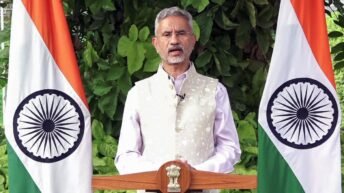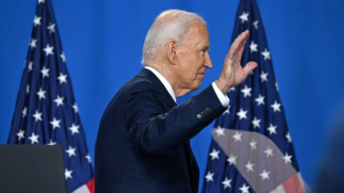|
Listen to article
Getting your Trinity Audio player ready...
|
By Dr. Manan Dwivedi & Shonit Nayan

India’s digital diplomacy with Australia comes at a crucial juncture for stability and security in the Indo-Pacific region.
Keywords: Indo-Pacific | India -Australia | Bilateral Relations | Comprehensive Strategic Partnership | Regional Powers | Digital Diplomacy | QUAD | Multilateralism | Free & Open Indo-Pacific
In the past few months, we have witnessed the Republic of India extensively using its digital expertise to accelerate its COVID diplomacy. The efficient leverage of digital expertise and the virtual setup has become the new oil for the South Block’s diplomatic outreach. This virtual diplomacy reached a new pinnacle when the Hon’ble Prime Minister of India, Mr Narendra Modi held the first-ever bilateral virtual summit with the Hon’ble Prime Minister of Australia, Mr Scott Morrison.
The first-ever Indo-Australian Virtual Summit between the two Indo-Pacific partners which took place on the 4th of June, 2020, was not only timely but also reflected an upward trajectory of friendship between the two powers. It has been evident that a new wave of momentum has risen within tenets of the increased importance of the two oceans i.e. Indian & Pacific and turned the Indo-Pacific area into a geostrategic construct. India and Australia are vital players of the Indo-Pacific region in the sense that these two powers strategically secure the region in the northwest & southeast. And the virtual summit was held, exactly in the backdrop of tense ties of both these powers with the People’s Republic of China.
Memorandum of Understandings signed and announced in the Virtual Summit
The Indo-Aussies warm and friendly bilateral relations have reached a new echelon through this first bilateral digital summit. The categories of bilateral engagements or mutual concerns which were raised during the virtual meet can be briefly bifurcated into two heads namely: Signed & Announced.
The list of agreements under the signed category would be as follows:
Mutual framework on Cyber & Cyber-enabled critical technology co-operation, MoU in the domain of mining & processing of critical & strategic minerals, Mutual Logistic Support Arrangement (MLSA), MoU in Defence Cooperation, MoU in the domains of Public Administration & Governance Reforms, MoU in the area of Vocational Education & Training, and MoU in the field of Water Resource & Management.
And those announced were
Comprehensive Strategic Partnership (hereafter referred to as CSP) & shared vision on Maritime Cooperation in the Indo-Pacific.
As far as the CSP is concerned, this is the elevated version of the Bilateral Strategic Partnership (BSP-2009). CSP is the upgraded BSP-2009 or BSP 2.0 which primarily revolves around the facets of reciprocated perceptive, trust factor, shared liberal democratic values & rule of law, shared geography & shared objectives. This CSP will further act as a catalytic booster towards India’s Indo-Pacific vision, Australia’s Pacific step up for the South Pacific region and will help towards an open and rule-governed Indo-Pacific supported by an inclusive global & regional institution which propels prosperity, stability & sovereignty in conformity with a shared interest. This will also act as the centripetal force towards making “Free & Open Indo-Pacific (FOIP)” Strategy pioneered by the Japanese PM Shinzo Abe in 2016, as the FOIP quadrangle is comprised of following four global powers namely: ‘USA(a great power); India (a rising power); Japan (an economic power); & Australia (a lynchpin power)’. And amid Covid-19 crisis and aggressive and assertive behaviour of China with several countries including the US, Australia, India & Japan, the role of this CSP as well as FOIP has become further pertinent.
On the front of Indo-Pacific Maritime Cooperation, both the countries mutually expressed the concern that in the near future maritime domain is one of the critical areas, not only, for both but also, for other coastal sovereign nations. While keeping these criticalities, both the powers have expressed deeper engagements between their respective maritime agencies, working in close consonance with regional multilateral platforms like ASEAN, and agreed on mutual sharing of technology & resources to facilitate the health & sustainability of the ocean and oceanic resources.
Way Ahead
This virtual summit will further lead to bear fruit in several new emerging dynamics across the Indo-Pacific Vista. This will accelerate the multilateralism across the region in terms of strengthening of ASEAN Defence Ministers Meet (ADMM Plus), East Asia Summit (EAS), Indian Ocean Naval Symposium (IONS), Indian Ocean Rim Association (IORA), US-India-Japan-Australian Quad and others as such regional grouping.
It will further help to establish a multi-polar Indo-Pacific order while ensuring there is a heterogeneous share of power across regional countries. Again in order to trim down its economic dependence on the People’s Republic of China, Australia will prefer to export more goods to India. Also, the nations would want to further cordial ties with their Southeast Asian Neighbors which are also involved in some kind of oceanic and territorial dispute with China which is flexing its muscle power across the South China Sea.
To conclude it can be said that prolonged geo-strategic & geopolitical stability across the Indo-Pacific vista is vectored by the significant dual cooperation between these two powers and stronger ties between India & Australia will not only protect regional stability but also yield mutual strategic benefits.






Add comment